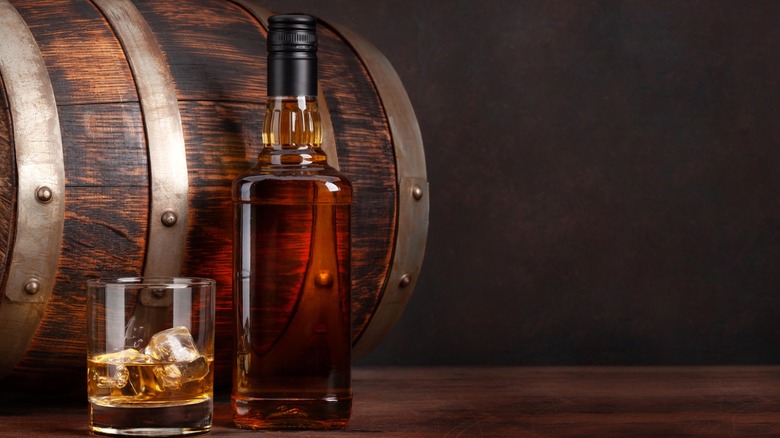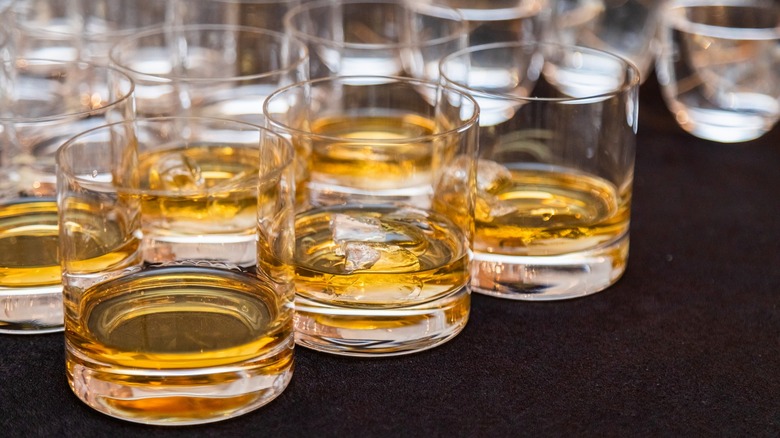How, Exactly, Does Bourbon Aging Work?
We may receive a commission on purchases made from links.
Age statements on bourbon can confuse even seasoned fans of the amber spirit. How long the liquor ages determines the difference between bourbon and straight bourbon, but how that affects the complex flavors isn't clear to some. Chris Blatner is an executive bourbon steward who shares his vast knowledge about whiskey at Urban Bourbonist on Instagram, and when we wanted to understand more about how aging the liquor works, he was an obvious resource to tap into.
In part, bourbon is aged to tame the sting of the alcohol, while also incorporating subtle flavors like toffee and vanilla into the spirit. However, it doesn't age just by sitting in charred oak barrels. Blatner said, "The aging process is also very much affected by the climate that a barrel is aged in, the warehouse placement within that climate, and the treatment and quality of the barrel before whiskey even enters it." When it is cold in the winter, the porous wood barrels contract; in the summer, they expand. That back-and-forth pulls the bourbon into the barrel and pushes it back out, imbuing it with traces of flavor and color as the barrels "breathe" the liquor. Some of the spirit is also lost to evaporation during this process, which distillers sometimes refer to as the "angel's share."
Still, aging too long can be a recipe for disaster, Blatner said: "While aging can add to the complexity of the whiskey, extended time in the barrel can often lead to an over-oaked, bitter and tannic bourbon." Furthermore, the "perfect" age depends on how it's meant to be imbibed.
How you drink bourbon determines the best age
The debate over whether you should sip whiskey neat or with ice will live on for ages, but it really comes down to a matter of personal preference. However, the age of the bourbon you put in the glass should accommodate your favored method of enjoying. "For sipping neat, I find 8–12 years to be the sweet spot," said Blatner. "Bourbons in that age range are mature enough to have complexity, and generally are not overly tannic."
On the other hand, if you like to let some ice dilute the spirit or just want to chill it with some attractive whiskey stones like Kollea Stainless Steel Whiskey Stones, a younger bourbon might be in order. Blatner said, "For drinking on the rocks, I like something in the 6–10 year range because the ice opens up the bourbon and allows some of the more complex flavors to come forward." Rocks glasses like LUXU Premium Whiskey Glasses have plenty of room for extra ice if that's how you like your drink.
If you plan on making cocktails or using the bourbon to make a warming hot toddy, you may want an even younger variety. "If it's going into a cocktail, I usually go younger — 4–6 years. Bourbon in that age range tends to be bolder and more aggressive and will hold up without being overpowered by the other ingredients." Whether sipped neat, with ice, or enjoyed in a cocktail, pairing the method of consumption with the appropriate age is the best way to fully appreciate the complex flavors in bourbon.

